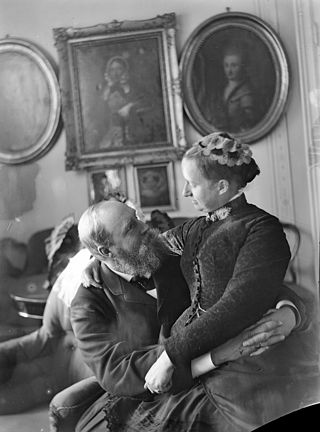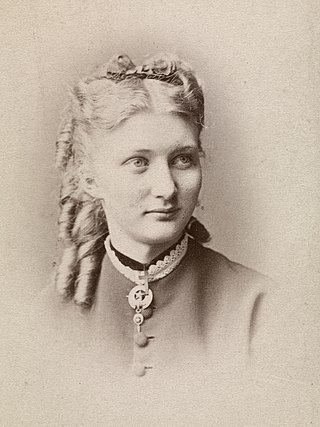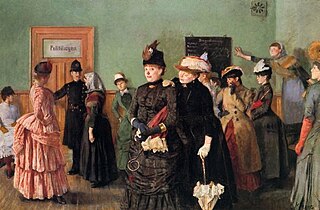



The Brodtkorb family is a Norwegian noble family of German origin. [1]




The Brodtkorb family is a Norwegian noble family of German origin. [1]
It has its origins in Saxony, Germany. The family first came to Norway in 1643 with Tobias Brodtkorb († 1676), who was a coin-writer (Norwegian: myntskriver) in Akershus and later a customs and export officer in Fredrikstad. His son was Christian Brodtkorb (1653–1701), goldsmith in Oslo, and his grandson was Tobias Brodtkorb (1685–1763), whose three sons established the family's principal branches: [2]
The family's most prominent branch was the Brodtkorbs of Tjøttagodset. In 1767, Niels Gierbrandt Brodtkorb purchased the large estate on the island of Tjøtta in Alstahaug. He married Anna Catharina Hvid, who was the daughter of Johan Christian Hvid, owner of the Tromsø estate (Tromsøgodset), and granddaughter of Michael Hvid, who had been the manager of the same estate, originally a part of the Baron of Westervick's estate in Northern Norway. [3]
Their son Johan Christian Hvid Brodtkorb (1766–1845) took over the Tjøtta estate. Through his marriage to Maren Winther, who was the daughter of estate owner Niels Winther and Anne Bech at Vevelstad, Brodtkorb extended the property with more land. Thereafter followed their son, Niels Gerbrand Winther Brodtkorb (1792–1865) married to Marie Berg, who was the daughter of Johan Ernst Berg, County Governor of Nordland. Their son was Johan Christian Brodtkorb, who became the last estate owner at Tjøtta. [4]
When the last proprietarian, Johan Brodtkorb the younger, died on 3 July 1918, the estate was bankrupt. One sought to let Brodtkorb relatives buy the estate, and in accordance with a property deed of 1867, they had pre-emption to Tjøtta Farm. This attempt did not succeed. The final auction was held in 1929, when the government, represented by the Ministry of Agriculture, bought the farm for 83,000 crowns (90,000 crowns including various fees). [5]
The manor's interior, however, had been sold one year earlier in an auction lasting for seven days. The manor was then basically emptied for old and valuable objects, thereafter transported to other parts of the country. Among the most precious items were a cabinet from 1627 belonging to Overlord of Helgeland Peter Jacobsen Falch and Anna Jonsdotter of Tjøtta Farm (Tjøtta gard), a collection of over 700 books, whereof many were old and written by hand, and a heraldic artwork displaying the Brodtkorb coat of arms. Also silver, china, and renaissance furniture were sold for relatively low prices. [5]
The family lineage dating back to 1643, the year in which Tobias Brodtkorb came to Norway, is documented in a work of 1904 by Antoinette Augusta Gram, née Brodtkorb. [6] Prior to 1643, the family name appears among matriculated students at the University of Leipzig. [7] There is also a digital version of the lineage. [8]
The German noun Brotkorb, which until the 1800s was spelled Brodtkorb, means 'breadbasket'.
Various arms have been used by family members. The use of the family's present coat of arms may be traced back to the 1700s.
Description: A golden basket under three golden stars. Upon the helm seven green peacock feathers.

Oslo Cathedral — formerly Our Savior's Church — is the main church for the Church of Norway Diocese of Oslo, as well as the parish church for downtown Oslo. The present building dates from 1694 to 1697.

Torolf Prytz was a Norwegian architect, goldsmith and politician for the Liberal Party. He led the goldsmith company J. Tostrup of Oslo from 1890 to 1938, having inherited it from his grandfather-in-law Jacob Tostrup. He also served as Norwegian Minister of Industrial Provisioning from 1917 to 1918 and President of the Norwegian Red Cross from 1922 to 1930.
Events in the year 1935 in Norway.
Events in the year 1983 in Norway.
Events in the year 1971 in Norway.
Events in the year 1742 in Norway.

Gregers Winther Wulfsberg Gram was a Norwegian jurist and politician, and international arbitrator. He was a Supreme Court Assessor, Norwegian prime minister in Stockholm from 1889 to 1891 and from 1893 to 1898 and County Governor from 1898 to 1915.

Jens Gram was a Norwegian industrialist.

Grete Ingeborg Johanne Andrea Gram was a Norwegian painter. She is best known for her landscapes and portraits.
Elisabeth Cathrine "Lise" Welhaven was a Norwegian writer.

Marius Nygaard was a Norwegian educator and linguist.
Tromsø Estate (Tromsøgodset) was an estate located in Troms, Norway. It was once part of the more sizable Irgens Estate.

Nils Vogt was a Norwegian journalist and newspaper editor. Born into a family of politicians and civil servants, he became the first chairman of the Norwegian Press Association and the Conservative Press Association. Vogt worked at the conservative newspaper Morgenbladet for 45 years, acting as editor-in-chief from 1894 to 1913. He wrote numerous articles during his lifetime, advocating independence from Sweden and the Riksmål standard of written Norwegian.

Albertine is a novel written in 1886 by Norwegian painter and writer Christian Krohg.
Events in the year 1779 in Norway.

Niels Carlsen was a Norwegian timber merchant, landowner, shipowner and banker. Carlsen was one of the biggest ship owners in Norway of his time.
Nicolaus Christian Friis was a Norwegian priest and theologian.
Lorentz Mortensen Angell was a merchant and landowner in Norway.
Mogens Larsen Monsen was a Norwegian timber trader and major land owner. Among other properties, he was the owner of the Linderud Manor.

Tjøtta is a former municipality in Nordland county, Norway. The 326-square-kilometre (126 sq mi) municipality existed from 1862 until its dissolution in 1965. The municipality was centered around the island of Tjøtta plus the mainland to the east and south as well as over 3000 islands, islets, and skerries to the west. The administrative centre of Tjøtta was the village of Tjøtta, located on the island of Tjøtta, where the Tjøtta Church is located.